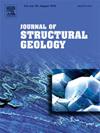The low acoustic impedance of fault zones in the Wisting field, Barents Sea: Gas saturation or damage zone?
IF 2.6
2区 地球科学
Q2 GEOSCIENCES, MULTIDISCIPLINARY
引用次数: 0
Abstract
The presence of faults in reservoirs can directly affect reservoir energy and feasibility in hydrocarbon bearing formations as well as repository potential for subsurface storage. Subsurface fault characterisation is an important but challenging workflow because a geoscientist is limited to the resolution of seismic data and sparse well data. The Barents Sea is renowned for exhumation generated gas seepage allowing preferential retainment of oil. In this study, observations in the fault zones of the Wisting field show reductions of acoustic impedance (Aimp) on seismic images. We characterise five intersecting E–W and N–S normal faults in the Wisting Central blocks using a novel approach, whereby low Aimp is mapped onto modelled fault surfaces and compared to parameters such as fault throw and shale gouge ratio. Low Aimp dominates E–W faults which exhibit more brittle response when compared to two N–S faults, where low Aimp values are sparse and the faults tip-out below a monocline. Two potential mechanisms causing the reduction of Aimp are proposed: 1) gas saturation, which can be as little as 2% to significantly reduce Aimp; 2) fault damage, which can decrease wave velocities and Aimp. The E–W faults in Wisting Central show higher reductions of Aimp than their N–S counterparts, indicating that they are either saturated with gas or have undergone higher damage.
求助全文
约1分钟内获得全文
求助全文
来源期刊

Journal of Structural Geology
地学-地球科学综合
CiteScore
6.00
自引率
19.40%
发文量
192
审稿时长
15.7 weeks
期刊介绍:
The Journal of Structural Geology publishes process-oriented investigations about structural geology using appropriate combinations of analog and digital field data, seismic reflection data, satellite-derived data, geometric analysis, kinematic analysis, laboratory experiments, computer visualizations, and analogue or numerical modelling on all scales. Contributions are encouraged to draw perspectives from rheology, rock mechanics, geophysics,metamorphism, sedimentology, petroleum geology, economic geology, geodynamics, planetary geology, tectonics and neotectonics to provide a more powerful understanding of deformation processes and systems. Given the visual nature of the discipline, supplementary materials that portray the data and analysis in 3-D or quasi 3-D manners, including the use of videos, and/or graphical abstracts can significantly strengthen the impact of contributions.
 求助内容:
求助内容: 应助结果提醒方式:
应助结果提醒方式:


